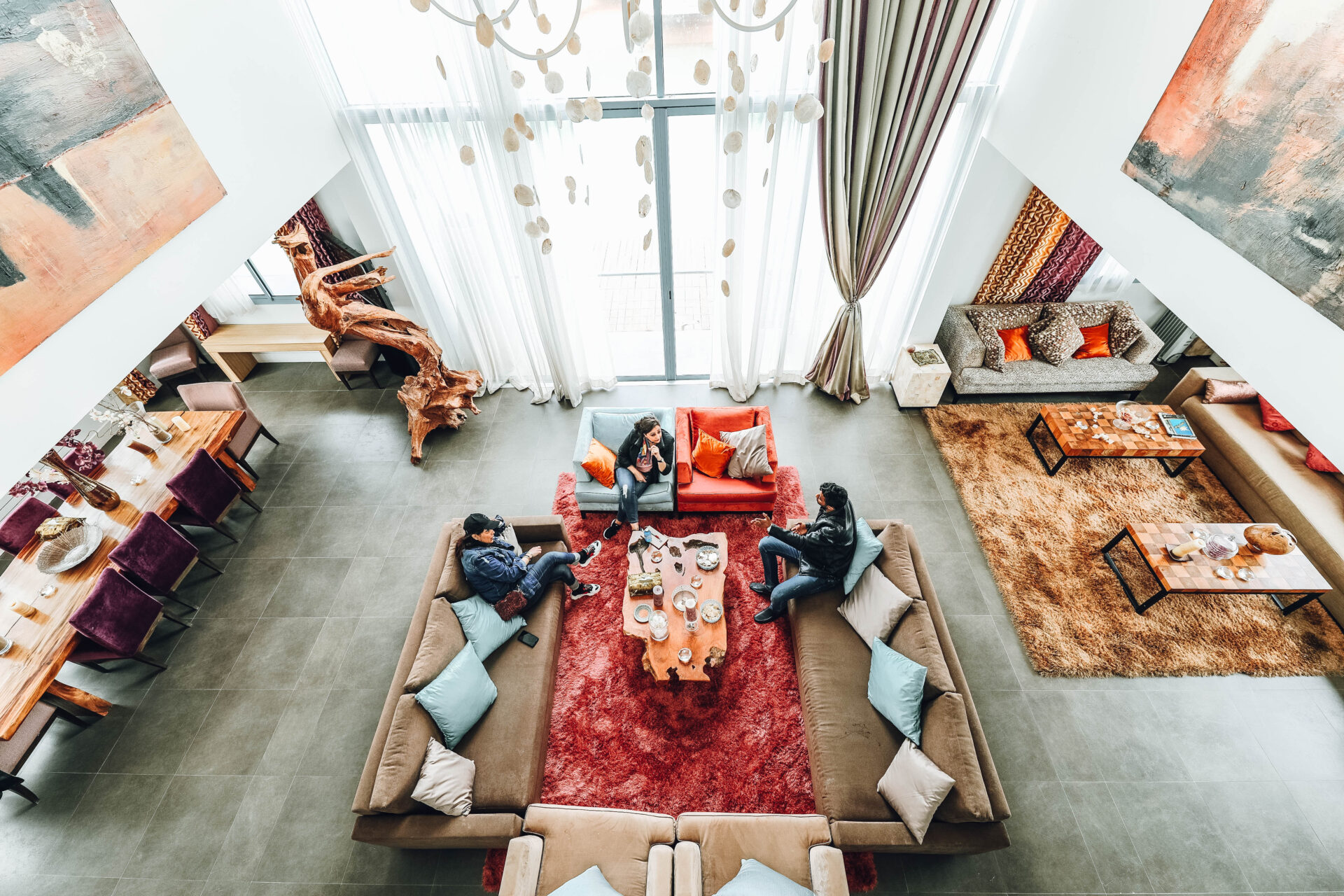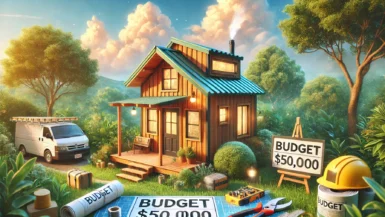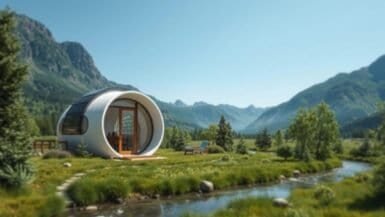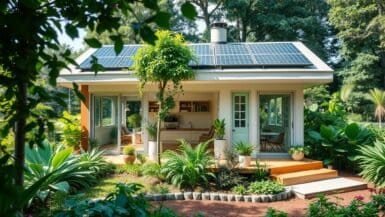Are you contemplating a transition to a more sustainable and minimalistic way of living? One increasingly popular option is to downsize to a tiny home. The allure of eco-friendly living paired with reduced financial burdens has made tiny homes an ideal choice for many. In this article, we will delve into the essential aspects of selecting the right size tiny home for your sustainable lifestyle. We will discuss the various factors to consider, including legal regulations, spatial requirements, and personal preferences, to ensure that your new abode is not only environmentally responsible but also tailored to your unique needs and aspirations. Join us as we explore the myriad possibilities in the world of tiny homes, and take a step closer to embracing a greener and more intentional way of life.
Assessing Your Space Needs for a Minimalist Lifestyle
Before diving into the world of tiny homes, it’s essential to have a clear understanding of your personal space requirements and how they align with your minimalist lifestyle goals. This involves evaluating your current living situation and comparing it to your envisioned tiny home life. In this subsection, we’ll discuss some key considerations that can help you determine the ideal size for your sustainable tiny home.
Take Inventory of Your Belongings
One of the first steps to assess your space needs is to take a thorough inventory of your belongings. This process will help you identify the items that are essential to your daily life and those that you can let go of in the pursuit of minimalism. It’s important to categorize your possessions, such as clothing, kitchenware, electronics, and personal items, to gain a better understanding of the storage and organization solutions you’ll need in your tiny home.
Identify Your Functional Spaces
Next, consider the functional spaces you require in your tiny home, such as a place to sleep, work, cook, and relax. Think about your daily routines and tasks, and how they would fit into a smaller living environment. This can help you define the essential areas of your tiny home and allow you to create a more efficient and practical floor plan.
Consider Your Social and Entertainment Needs
Living in a tiny home doesn’t mean you have to sacrifice your social life or hobbies. However, it does require a more thoughtful approach to how you accommodate these aspects of your life within a limited space. Reflect on your socializing habits and entertainment preferences, and identify the features and spaces that are necessary to maintain your desired lifestyle. This could include a comfortable seating area for guests, a dedicated workspace for your hobbies, or even an outdoor living space to expand your entertaining options.
Factor in Future Changes and Growth
While it’s crucial to design your tiny home around your current needs, it’s also wise to consider potential changes and growth in the future. For instance, if you plan to start a family, adopt pets, or change careers, these factors should influence the size and layout of your tiny home. Being mindful of your long-term goals can help you create a more adaptable and sustainable living space that can evolve with your changing needs.
By thoroughly evaluating your space requirements, functional needs, and lifestyle aspirations, you can confidently choose the right size tiny home for your sustainable lifestyle. This process not only helps you create a living environment that aligns with your minimalist goals but also ensures that your new home is a comfortable and fulfilling space that enhances your daily life.
Sustainable Materials and Design Options for Tiny Homes
As you embark on your journey to build the perfect tiny home for your sustainable lifestyle, it’s essential to consider the materials and design elements that will not only minimize your ecological footprint but also contribute to the overall durability and aesthetic appeal of your dwelling. In this subsection, we will explore various sustainable materials and design options that can be incorporated into your tiny home to create a comfortable, functional, and environmentally responsible living space.
Eco-Friendly Building Materials
Choosing sustainable building materials is a crucial aspect of constructing an eco-friendly tiny home. Some popular options include reclaimed or recycled materials, such as reclaimed wood, recycled metal, or reclaimed bricks. These materials help reduce waste and promote a circular economy while also adding character and charm to your tiny home. Additionally, consider using natural, rapidly renewable materials like bamboo, cork, or straw bales, which are not only renewable but also provide excellent insulation and durability.
Energy-Efficient Design Features
Integrating energy-efficient design features into your tiny home can significantly reduce your energy consumption and reliance on non-renewable resources. This can be achieved through passive solar design techniques, such as strategically placing windows and skylights to maximize natural light and heat gain. Additionally, installing energy-efficient appliances, LED lighting, and proper insulation can further enhance your home’s energy performance and lower your utility bills.
Water Conservation Measures
Incorporating water-saving features into your tiny home design can help minimize your water usage and reduce the strain on local water resources. Installing low-flow fixtures, such as faucets, showerheads, and toilets, can significantly decrease your water consumption. Additionally, consider incorporating a rainwater harvesting system or greywater recycling system to further enhance your tiny home’s water conservation efforts.
Indoor Air Quality and Non-Toxic Materials
Prioritizing indoor air quality is essential for creating a healthy and comfortable living environment in your tiny home. Opt for low-VOC (volatile organic compound) paints, sealants, and adhesives to reduce harmful chemicals and improve the air quality within your home. Additionally, choose natural and non-toxic materials for your flooring, cabinetry, and countertops, such as sustainably harvested hardwood, linoleum, or recycled glass.
Biophilic Design Elements
Incorporating elements of biophilic design, which focuses on connecting occupants with nature, can enhance the overall well-being and aesthetic appeal of your tiny home. This can be achieved through the use of natural materials, indoor plants, and creating seamless indoor-outdoor living spaces. By integrating nature into your tiny home design, you can enjoy improved mental health, reduced stress, and increased overall satisfaction with your living environment.
By carefully selecting sustainable materials and incorporating eco-friendly design features, you can create a tiny home that aligns with your environmental values and contributes to a healthier planet. With a focus on energy efficiency, water conservation, indoor air quality, and biophilic design elements, your tiny home will not only minimize its ecological footprint but also provide a comfortable, functional, and aesthetically pleasing space for you to enjoy your sustainable lifestyle.
Balancing Functionality and Comfort in Compact Living Spaces
When designing your tiny home, striking the right balance between functionality and comfort is crucial to ensure that your living space meets your needs and supports your sustainable lifestyle. By thoughtfully considering your daily routines, storage requirements, and design preferences, you can create a cozy, efficient, and enjoyable environment that maximizes the potential of your compact living space. In this subsection, we will delve into various strategies and design tips that can help you achieve this delicate balance in your tiny home.
Optimizing Space with Multi-Functional Furniture
One of the key strategies to maximize functionality and comfort in a tiny home is to utilize multi-functional furniture. By incorporating pieces that serve multiple purposes, you can save space, reduce clutter, and create a more adaptable living environment. Examples of multi-functional furniture include sofa beds, fold-out desks, and convertible dining tables. These versatile pieces can help you make the most of your limited square footage while maintaining a comfortable and functional living space.
Smart Storage Solutions
Effective storage solutions are essential for maintaining organization and comfort in a tiny home. By creatively utilizing every inch of available space, you can store your belongings without compromising the overall aesthetic and functionality of your living area. Consider incorporating built-in storage options, such as under-bed drawers, floor-to-ceiling shelving, and hidden compartments within furniture. Additionally, using vertical space and wall-mounted storage solutions can help you maximize your storage capacity without sacrificing valuable floor space.
Creating Zones for Different Activities
Dividing your tiny home into distinct zones for various activities can help you maintain a sense of order and functionality within your compact living space. By clearly defining areas for sleeping, working, cooking, and relaxing, you can create a more structured and efficient environment that supports your daily routines. This can be achieved through the use of room dividers, curtains, or even strategic furniture placement to delineate separate areas within your tiny home.
Maximizing Natural Light and Ventilation
A well-lit and ventilated living space can significantly enhance the comfort and overall ambiance of your tiny home. By incorporating large windows, skylights, or sliding glass doors, you can increase the amount of natural light in your home and create a more open and spacious feel. Additionally, ensuring proper ventilation through the use of windows, vents, or exhaust fans can improve indoor air quality and create a healthier living environment.
Personalizing Your Space with Décor and Design Elements
Finally, to truly balance functionality and comfort, it’s essential to infuse your tiny home with your unique personality and style. By incorporating décor and design elements that reflect your tastes and preferences, you can create a living space that feels truly yours and fosters a sense of well-being. Whether this involves selecting a cohesive color scheme, displaying artwork and personal mementos, or incorporating your favorite textures and materials, personalizing your tiny home can contribute to a comfortable and inviting atmosphere.
By focusing on these strategies and design tips, you can effectively balance functionality and comfort in your compact living space, creating a tiny home that supports and enhances your sustainable lifestyle. With an emphasis on multi-functional furniture, smart storage solutions, defined activity zones, natural light, and personalized décor, your tiny home will not only be an efficient and practical dwelling but also a cozy and inviting sanctuary that reflects your unique personality and values.
Tiny Home Regulations and Zoning Requirements to Consider
As you embark on your journey to create the perfect sustainable tiny home, it’s essential to be aware of the various regulations and zoning requirements that may impact your building and living arrangements. Familiarizing yourself with these rules and restrictions can help you avoid potential legal complications and ensure that your tiny home complies with local ordinances. In this subsection, we will discuss several critical aspects of tiny home regulations and zoning requirements that you should consider during the planning and construction stages of your project.
Navigating Building Codes and Tiny Home Classification
One of the first steps in understanding tiny home regulations is to determine how your tiny home will be classified under local building codes. Depending on the design and construction of your dwelling, it may be considered a single-family home, a recreational vehicle (RV), or a mobile home. Each classification comes with its own set of building codes and standards, which may affect the size, materials, and utility connections required for your tiny home.
Understanding Zoning Laws and Land Use Restrictions
Zoning laws and land use restrictions can significantly impact where you can legally place your tiny home. Depending on the classification of your dwelling, you may be restricted to specific zones, such as residential areas, RV parks, or mobile home communities. It’s crucial to research local zoning ordinances and land use restrictions before purchasing land or beginning construction to ensure that your tiny home will be allowed in your desired location.
Obtaining Necessary Permits and Inspections
In order to build and occupy your tiny home legally, you may be required to obtain various permits and undergo inspections to ensure compliance with local building codes and safety regulations. This may include obtaining building permits, electrical permits, plumbing permits, and more. Furthermore, your tiny home may be subject to regular inspections to verify ongoing compliance with applicable standards. Familiarize yourself with the permitting and inspection process in your area to avoid potential delays and complications during the construction and occupancy of your tiny home.
Adapting to Local Utility Requirements and Restrictions
When planning your sustainable tiny home, it’s essential to consider local utility requirements and restrictions, such as access to water, electricity, and sewage disposal. Some areas may have specific regulations governing the installation and use of alternative utilities, such as solar panels, composting toilets, or greywater systems. Ensure that your tiny home design and utility solutions comply with these regulations to avoid potential legal issues and maintain a sustainable living environment.
Considering Community Guidelines and Homeowners Association Rules
If you plan to place your tiny home within a community or on a property governed by a homeowners association (HOA), it’s crucial to be aware of any additional guidelines or rules that may apply to your dwelling. Some communities or HOAs may have specific requirements regarding the size, appearance, or placement of tiny homes. Review any relevant community guidelines or HOA rules before finalizing your tiny home plans to ensure that your sustainable dwelling will be welcomed and supported in your chosen community.
By thoroughly researching and understanding the various regulations and zoning requirements that may impact your tiny home project, you can avoid potential legal complications and create a sustainable living space that complies with local ordinances. This knowledge will not only help you navigate the planning and construction phases more smoothly but will also contribute to the long-term success and enjoyment of your sustainable tiny home lifestyle.
Adapting to Off-Grid Living and Energy Efficiency in Your Tiny Home
Embracing a sustainable lifestyle often involves reducing one’s dependence on traditional energy sources and exploring alternative, eco-friendly options. By adapting to off-grid living and enhancing the energy efficiency of your tiny home, you can significantly minimize your environmental impact and enjoy a greater sense of self-sufficiency. In this subsection, we will delve into various strategies and technologies that can help you transition to off-grid living and optimize the energy efficiency of your tiny home.
Generating Renewable Energy with Solar Power
One of the most popular and effective ways to power your tiny home off-grid is through solar energy. By installing solar panels on your roof or property, you can generate clean, renewable electricity to meet your daily needs. When considering solar power, it’s crucial to evaluate your energy consumption, available sunlight, and budget to determine the appropriate size and type of solar system for your tiny home.
Utilizing Energy Storage Solutions
To ensure a consistent and reliable energy supply for your off-grid tiny home, it’s essential to invest in energy storage solutions, such as batteries. Battery systems can store excess solar energy produced during the day, allowing you to access electricity during nighttime or periods of low sunlight. Research various battery options and capacities to find a storage solution that aligns with your energy needs and budget.
Implementing Energy-Efficient Appliances and Lighting
The appliances and lighting you choose for your tiny home can significantly impact your overall energy consumption. Opt for energy-efficient appliances, such as Energy Star-rated refrigerators, washing machines, and dishwashers, to reduce your electricity usage. Additionally, install LED lighting throughout your home to further decrease energy consumption and enhance the overall efficiency of your off-grid living space.
Maximizing Insulation and Thermal Performance
Ensuring that your tiny home is well-insulated and thermally efficient can help you maintain a comfortable indoor temperature while reducing your heating and cooling energy demands. Invest in high-quality insulation materials, and pay close attention to areas prone to heat loss, such as windows and doors. By optimizing your tiny home’s thermal performance, you can enjoy a cozy living environment while minimizing your reliance on external energy sources.
Exploring Alternative Heating and Cooling Solutions
Heating and cooling can account for a significant portion of your tiny home’s energy consumption, making it essential to explore alternative, energy-efficient solutions for temperature control. Consider options such as wood-burning stoves, passive solar design strategies, or energy-efficient mini-split systems to provide heating and cooling for your off-grid tiny home without relying on traditional, non-renewable energy sources.
By implementing these strategies and technologies, you can successfully adapt to off-grid living and enhance the energy efficiency of your tiny home. From harnessing solar power and utilizing energy storage solutions to investing in energy-efficient appliances and optimizing insulation, these measures will not only help you minimize your environmental impact but also contribute to a more self-sufficient and sustainable lifestyle in your tiny home.





Leave a reply